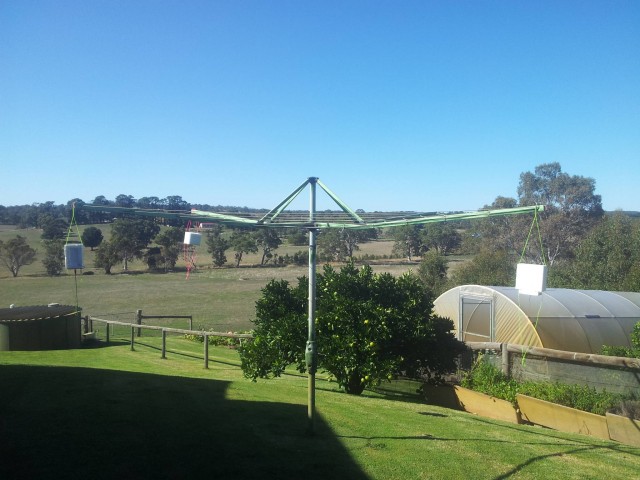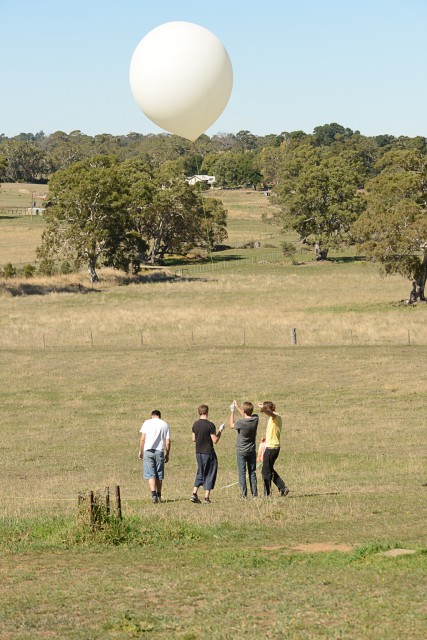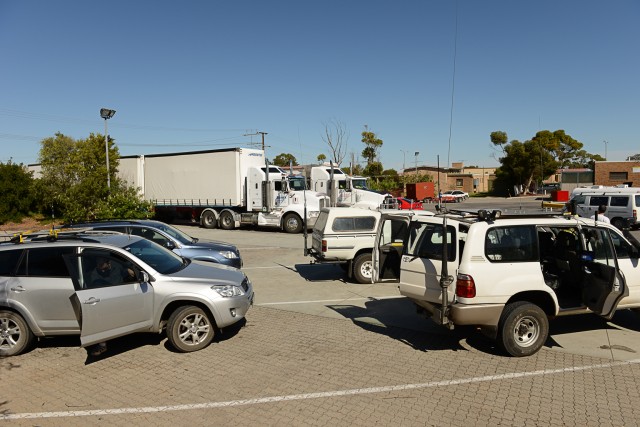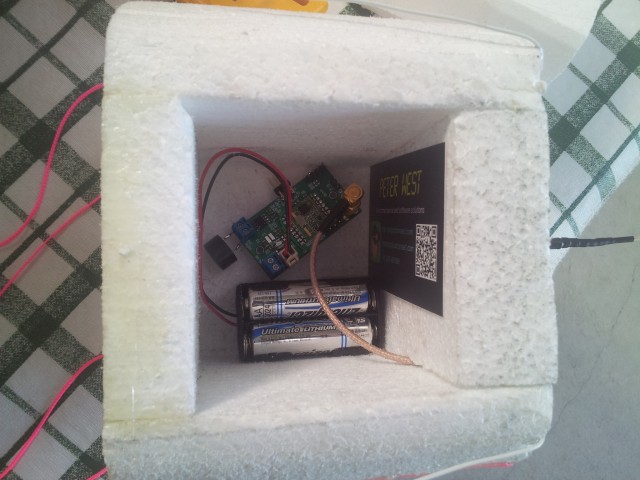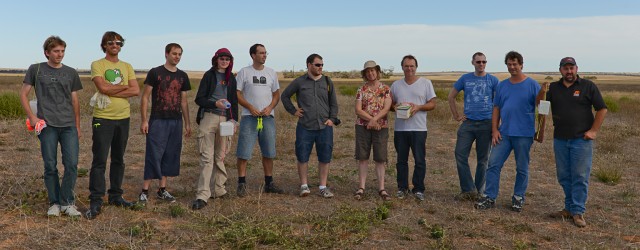Horus 23
Technical information:
| Launch date | 15/4/2012, 01:50 UTC |
| Landing date | 15/4/2012, 04:43 UTC |
| Flight duration | Approx 3 hours |
| Launch site | -35.1022, 138.8257 |
| Landing site | -35.3163, 140.1072 |
| Flight path | Web,В KMZ |
| Distance travelled | 119.1 km |
| Maximum altitude | 35,376 m |
| Average ascent rate | 5.5 m/s |
| Impact speed | 4 m/s |
| Flight computer | MicroNut Flight Computer |
| Backup telemetry | MicroNut APRS Payload |
| Additional payloads | Amateur repeater, uplink test payload |
| Primary radio TX |
Radiometrix NTX2 25mW (RTTY) |
| Telemetry | 300 baud RTTY, CRC16 checksum, APRS |
| Tracking | Ground stations (distributed listener), 4 chase cars, web based tracker, APRS |
Details:
Horus 23 was a re-fly of the cross band radio repeater that we'd previously flown in Horus 9, timed to coincide with the WIA national field day. The flight was heavily promoted amongst the amateur radio community, and we got a great turn out with many stations in South Australia and Victoria working the repeater.
We also flew an experimental uplink payload aboard 23. Developed by Mark, the payload is intend to give us remote command abilities - allowing us to terminate flights from the ground or otherwise change the operational mode of our equipment once airborne.
Preparation & Launch:
Preparations for Horus 23 went very smoothly - our chase cars all arrived at the launch site with plenty of time to spare, and filling + configuring payloads went as planned.
Horus 23 saw the return of Adrian's chase car & also a new chase team headed up by Andy VK5AKH.
Flight & Recovery:
The flight of Horus 23 also went perfectly - a good fill of the balloon assured a solid 5m/s+ ascent rate, and a healthy burst altitude of 35.3km. All 4 chase cars performed well, with no notable system issues. The flight path followed predictions very closely - eventually coming down to land just north of Peake.
We observed an interesting phenomenon with Horus 23 - as the payload neared its predicted landing site, descent rate slowed to less than 1m/s. It seems likely that Horus 23 was caught in an updraft for a few minutes - pushing out its flight time and meaning it landed a little further east than expected.
Conclusions:
Horus 23 was a resounding success, and a textbook flight. The cross band repeater worked as expected, with great coverage and a good number of contacts logged. No unexpected problems were encountered, and Mark's uplink payload worked flawlessly - Mark was able to make communication from both a high powered radio set (Icom IC-7000), as well as a standalone uplink board outputting only 100mW.
The success of the uplink payload is great news - it opens the doors to lots possibilities with remote-command capable payloads. Key amongst these possibilities is an uplink cutdown device, allowing us to remotely terminate a flight from the ground - this will be useful in preventing float situations from resulting in lost payloads.
A big thanks goes out to all those helped make this flight possible - especially the chase teams and those who operated repeater control under the VK5ARG callsign at VK5GH's house. The flight map includes a list of contacts logged - those who have been missed, please do not hesitate to contact us to make sure your receive your QSL card.
